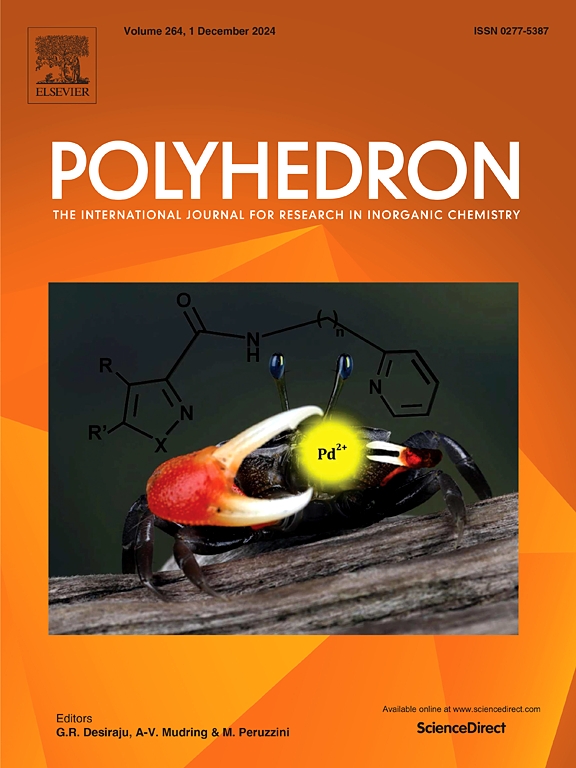Radiographic, mechanical, and chemical properties of mineral trioxide aggregate from nanosilica and clam shell calcium carbonate
IF 2.4
3区 化学
Q2 CHEMISTRY, INORGANIC & NUCLEAR
引用次数: 0
Abstract
This study synthesized mineral trioxide aggregate (MTA) using nano silica and clam shells-derived calcium carbonate, incorporating various radiopacity agents such as bismuth oxide (Bi2O3), zinc oxide (ZnO), and strontium oxide (SrO). The physicochemical characteristics of the synthesized MTA were evaluated to determine the optimal compositions for endodontic applications. The synthesis was conducted using the sol–gel method, which involved solvent mixing, heating, and gel formation, followed by a solid-state reaction at 1000 °C. The obtained products were characterized using XRD, FTIR, and SEM-EDX. The properties of MTA products, including radiopacity, compressive strength, diametral tensile strength, pH, and calcium ion release, were evaluated. Results indicated that ZnO/MTA and SrO/MTA exhibited superior characteristics, forming stable cement structures with the compressive strength of 12.69 ± 0.93 and 11.15 ± 1.26 MPa, respectively, after 14 days of hydration. Bi2O3/MTA demonstrated the highest radiopacity value of 7.96 ± 0.18 mmAl, followed by SrO/MTA (4.17 ± 0.10 mmAl) and ZnO/MTA (3.43 ± 0.35 mmAl). All synthesized products maintained an alkaline pH throughout the 14-day immersion period and exhibited calcium ion release, which was beneficial for inducing apatite formation. These findings suggest that ZnO and SrO are effective radiopacity agents in MTA synthesized from nano silica and clam shell-derived calcium carbonate, enhancing its suitability for endodontic treatments.

纳米二氧化硅和蛤壳碳酸钙合成的矿物三氧化物聚集体的放射学、力学和化学性质
本研究使用纳米二氧化硅和蛤壳衍生的碳酸钙合成了矿物三氧化物骨料(MTA),并加入了各种不透光剂,如氧化铋(Bi2O3)、氧化锌(ZnO)和氧化锶(SrO)。对合成的MTA的物理化学特性进行了评估,以确定牙髓治疗应用的最佳组合物。采用溶胶-凝胶法进行合成,包括溶剂混合、加热和凝胶形成,然后在1000℃下进行固态反应。用XRD、FTIR和SEM-EDX对所得产物进行了表征。评估了MTA产品的性能,包括不透光性、抗压强度、直径抗拉强度、pH值和钙离子释放。结果表明,ZnO/MTA和SrO/MTA表现出优异的水化性能,水化14 d后形成稳定的水泥结构,抗压强度分别为12.69±0.93和11.15±1.26 MPa。Bi2O3/MTA的不透射线值最高,为7.96±0.18 mmAl,其次是SrO/MTA(4.17±0.10 mmAl)和ZnO/MTA(3.43±0.35 mmAl)。所有合成产物在14 d的浸泡时间内均保持碱性,并释放钙离子,有利于诱导磷灰石形成。研究结果表明,ZnO和SrO是纳米二氧化硅和蛤壳碳酸钙合成MTA的有效增透剂,增强了MTA在牙髓治疗中的适用性。
本文章由计算机程序翻译,如有差异,请以英文原文为准。
求助全文
约1分钟内获得全文
求助全文
来源期刊

Polyhedron
化学-晶体学
CiteScore
4.90
自引率
7.70%
发文量
515
审稿时长
2 months
期刊介绍:
Polyhedron publishes original, fundamental, experimental and theoretical work of the highest quality in all the major areas of inorganic chemistry. This includes synthetic chemistry, coordination chemistry, organometallic chemistry, bioinorganic chemistry, and solid-state and materials chemistry.
Papers should be significant pieces of work, and all new compounds must be appropriately characterized. The inclusion of single-crystal X-ray structural data is strongly encouraged, but papers reporting only the X-ray structure determination of a single compound will usually not be considered. Papers on solid-state or materials chemistry will be expected to have a significant molecular chemistry component (such as the synthesis and characterization of the molecular precursors and/or a systematic study of the use of different precursors or reaction conditions) or demonstrate a cutting-edge application (for example inorganic materials for energy applications). Papers dealing only with stability constants are not considered.
 求助内容:
求助内容: 应助结果提醒方式:
应助结果提醒方式:


